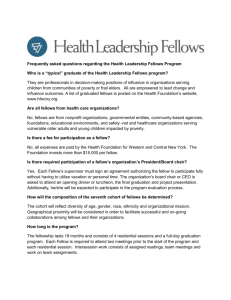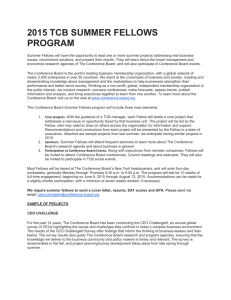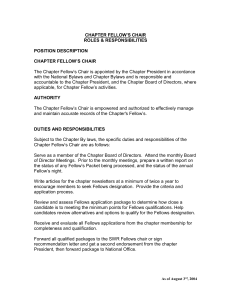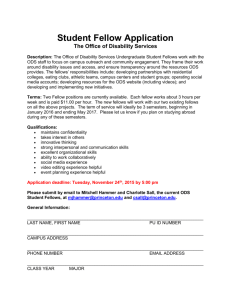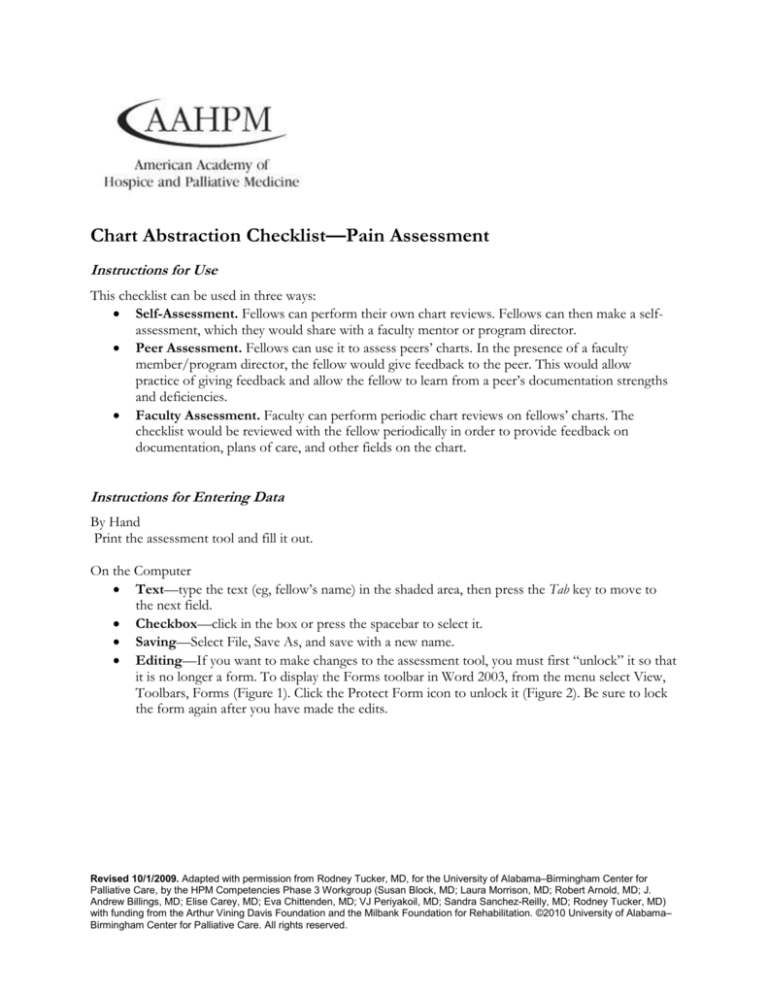
Chart Abstraction Checklist—Pain Assessment
Instructions for Use
This checklist can be used in three ways:
Self-Assessment. Fellows can perform their own chart reviews. Fellows can then make a selfassessment, which they would share with a faculty mentor or program director.
Peer Assessment. Fellows can use it to assess peers’ charts. In the presence of a faculty
member/program director, the fellow would give feedback to the peer. This would allow
practice of giving feedback and allow the fellow to learn from a peer’s documentation strengths
and deficiencies.
Faculty Assessment. Faculty can perform periodic chart reviews on fellows’ charts. The
checklist would be reviewed with the fellow periodically in order to provide feedback on
documentation, plans of care, and other fields on the chart.
Instructions for Entering Data
By Hand
Print the assessment tool and fill it out.
On the Computer
Text—type the text (eg, fellow’s name) in the shaded area, then press the Tab key to move to
the next field.
Checkbox—click in the box or press the spacebar to select it.
Saving—Select File, Save As, and save with a new name.
Editing—If you want to make changes to the assessment tool, you must first “unlock” it so that
it is no longer a form. To display the Forms toolbar in Word 2003, from the menu select View,
Toolbars, Forms (Figure 1). Click the Protect Form icon to unlock it (Figure 2). Be sure to lock
the form again after you have made the edits.
Revised 10/1/2009. Adapted with permission from Rodney Tucker, MD, for the University of Alabama–Birmingham Center for
Palliative Care, by the HPM Competencies Phase 3 Workgroup (Susan Block, MD; Laura Morrison, MD; Robert Arnold, MD; J.
Andrew Billings, MD; Elise Carey, MD; Eva Chittenden, MD; VJ Periyakoil, MD; Sandra Sanchez-Reilly, MD; Rodney Tucker, MD)
with funding from the Arthur Vining Davis Foundation and the Milbank Foundation for Rehabilitation. ©2010 University of Alabama–
Birmingham Center for Palliative Care. All rights reserved.
Chart Abstraction Checklist—Pain Assessment
Competency Domain: Patient and Family Care, Practice-Based Learning and Improvement
Purpose: To assess fellow’s documentation of pain in the medical chart.
Instructions
1. Select 5 to 10 inpatient or outpatient charts. Criteria for patient chart selection:
● Pain was a major problem at the time of admission or consultation
● Any primary pain diagnosis is appropriate: acute, chronic nonmalignant or malignant, acute on
chronic, etc.
● Patient was cognitively intact—can give reliable pain history.
2. Review fellow notes for the items listed below.
History (Documented?)
Yes
No
Partial
1.
Pain location
2.
Pain duration
3.
Pain intensity (using a quantitative scale)
4.
Pain quality (descriptors: eg, sharp, dull)
5.
Patient's goal for pain relief is defined (numeric or functional)
6.
Effect of pain on physical activity and appetite
7.
Effect of pain on emotions, mood, or coping
8.
Analgesic meds (current meds listed, side effects and toxicity)
9.
Analgesic history (previous meds listed, side effects and toxicity)
10.
Previous pain experience including substance abuse history
Physical Exam (Documented?)
1.
Global patient appearance (distressed, comfortable, etc.)
2.
Presence of pain behaviors
3.
Focused physical exam appropriate for pain location
Assessment/Plan (Documented?)
1.
Pain is listed in problem list as distinct entity
2.
Multimodal plan for pain management is discussed
3.
Patient educated re. medication changes or new meds prescribed
4.
Follow up visit or referrals noted
5.
Time and duration of visit noted
Scoring: 1 point for each item marked YES; and 0.5 point for PARTIAL
14–18 = Excellent
9–13 = Good
Yes
No
Partial
Yes
No
Partial
Total Score:
5–8 = Fair
1–4 = Poor
Review results with fellow:
Date:
Fellow
Signature:
Reviewer
Signature:
Revised 10/1/2009. Adapted with permission from Rodney Tucker, MD, for the University of Alabama–Birmingham Center for Palliative Care,
by the HPM Competencies Phase 3 Workgroup (Susan Block, MD; Laura Morrison, MD; Robert Arnold, MD; J. Andrew Billings, MD; Elise
Carey, MD; Eva Chittenden, MD; VJ Periyakoil, MD; Sandra Sanchez-Reilly, MD; Rodney Tucker, MD) with funding from the Arthur Vining Davis
Foundation and the Milbank Foundation for Rehabilitation. ©2010 University of Alabama–Birmingham Center for Palliative Care. All rights
reserved.

